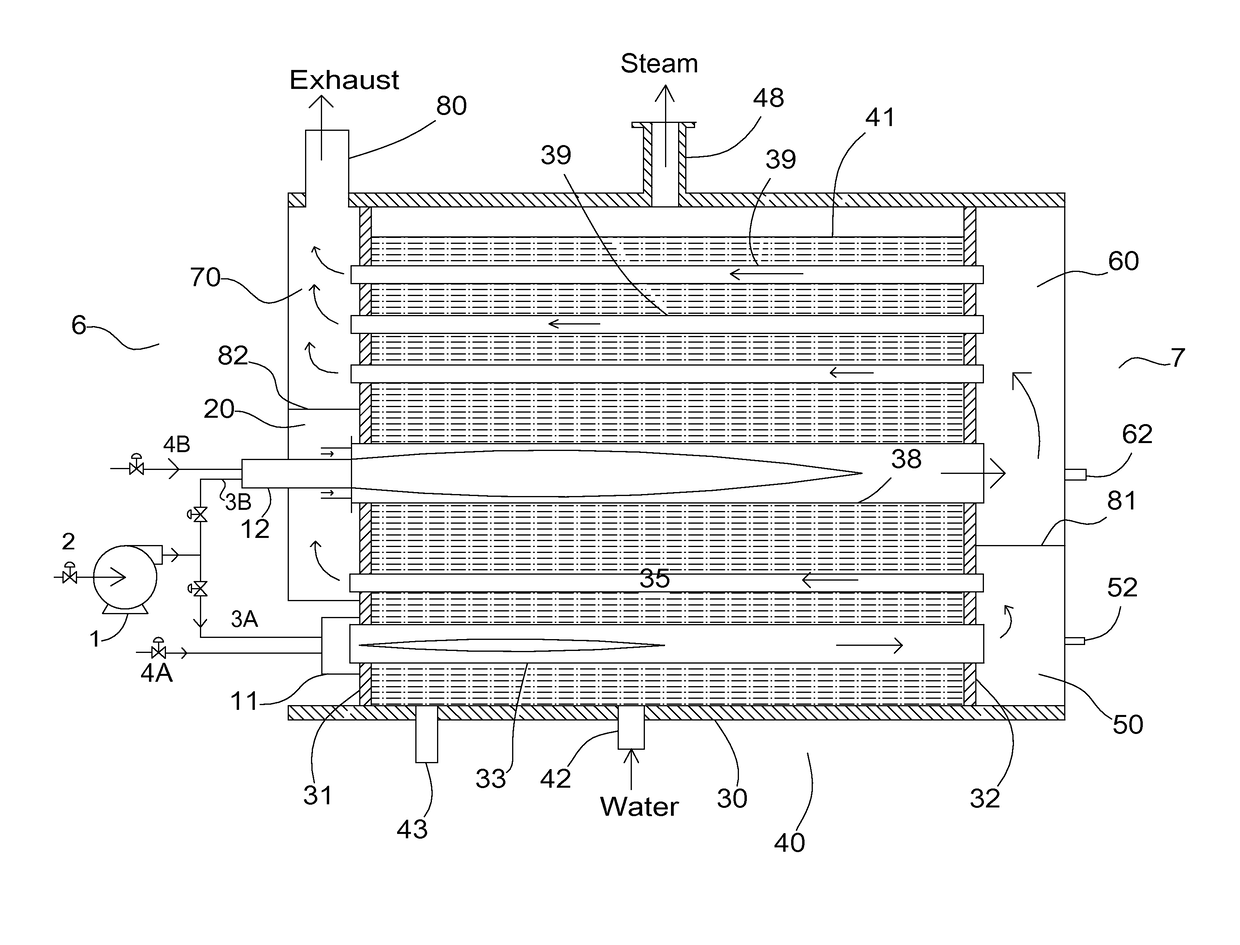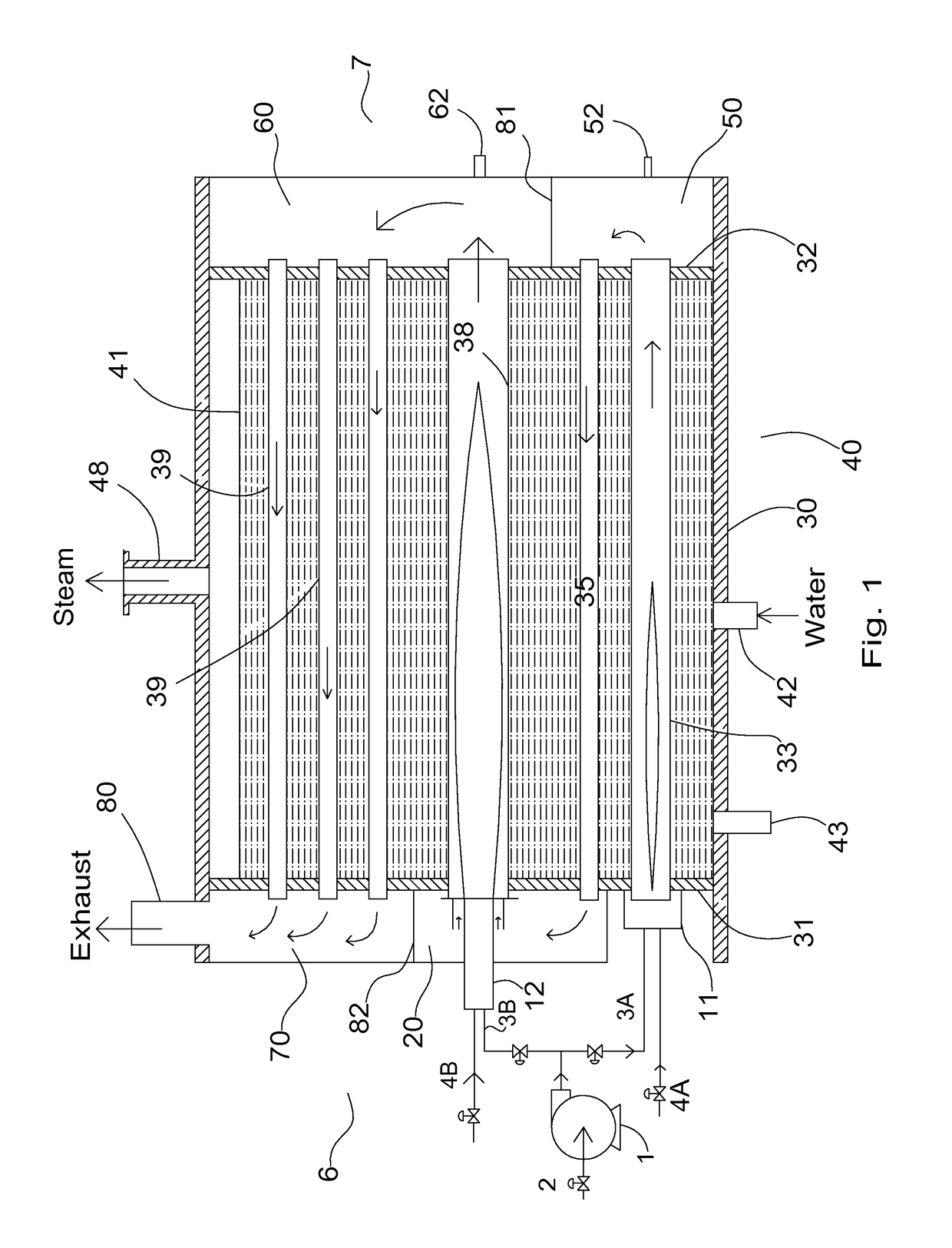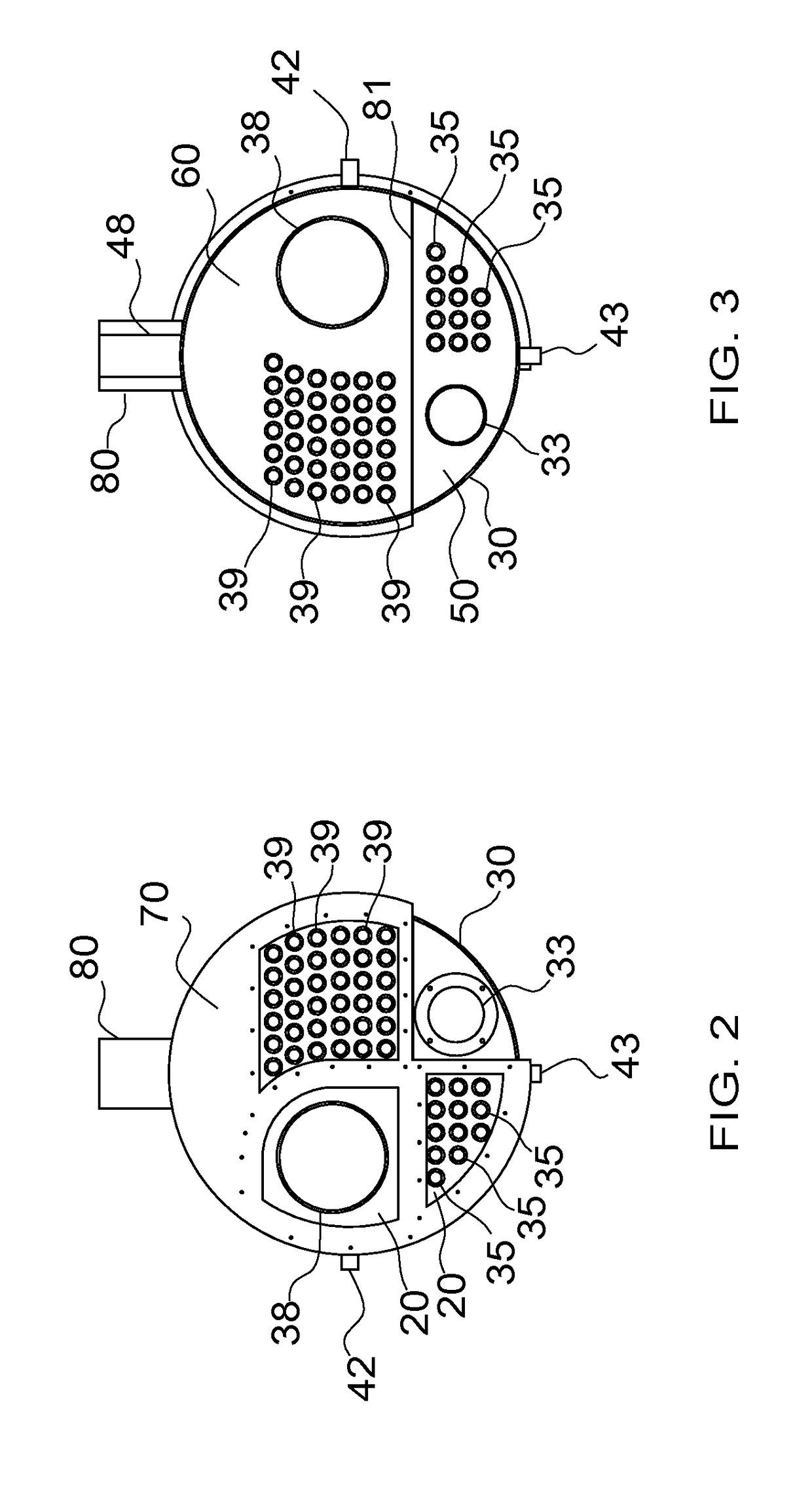Method and Apparatus for Firetube Boiler and Ultra Low NOx Burner
a technology of nox burner and firetube boiler, which is applied in the direction of furnace-tube steam boiler, steam boiler components, flue gas purification components, etc., can solve the problems of hampered innovation in low-emission burners, inability to substantially self-control forced fgr, and complicated control, etc., to achieve low nox emissions, high thermal efficiency, and low electricity consumption
- Summary
- Abstract
- Description
- Claims
- Application Information
AI Technical Summary
Benefits of technology
Problems solved by technology
Method used
Image
Examples
Embodiment Construction
[0026]For the purpose of this invention, a burner shall mean a device to produce one or more flames in the firetube boiler of the current invention in a controlled manner, taking inputs from at least one fuel source and an oxidizer source such as air. The two stages of the burner disclosed in this invention could arguably be referred to as two separate burners by anyone skilled in the art. Such change of nomenclature does not create a new invention outside the scope of the current invention.
[0027]FIG. 1 shows a schematic view of an apparatus for the current invention. A boiler 5 has a cylindrical shell 30, which is welded to a front tube sheet 31 and a rear tube sheet 32 to form a pressure vessel 40. Furnace tubes 33 and 38 are positioned in the shell 30 to extend the length of the shell from tube sheet 31 and to tube sheet 32, and sealingly attached (typically welded) to these tube sheets per firetube boiler codes. A plurality of firetubes 35 and 39 are also positioned in the shell...
PUM
 Login to View More
Login to View More Abstract
Description
Claims
Application Information
 Login to View More
Login to View More - R&D
- Intellectual Property
- Life Sciences
- Materials
- Tech Scout
- Unparalleled Data Quality
- Higher Quality Content
- 60% Fewer Hallucinations
Browse by: Latest US Patents, China's latest patents, Technical Efficacy Thesaurus, Application Domain, Technology Topic, Popular Technical Reports.
© 2025 PatSnap. All rights reserved.Legal|Privacy policy|Modern Slavery Act Transparency Statement|Sitemap|About US| Contact US: help@patsnap.com



